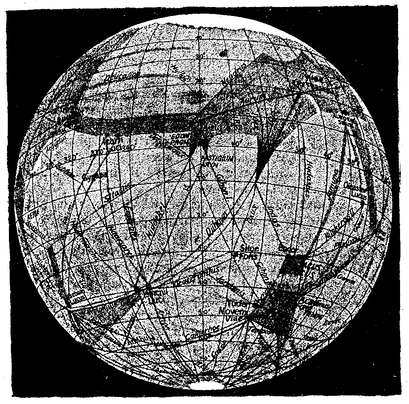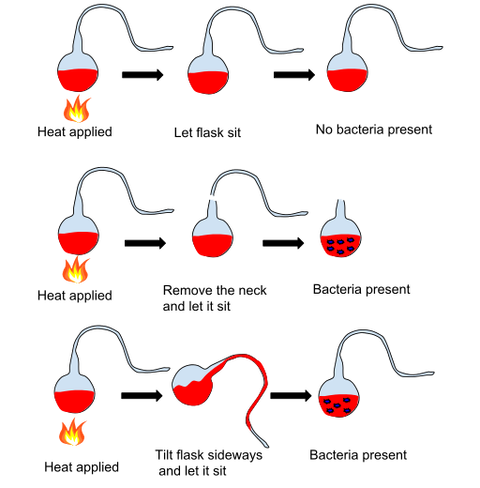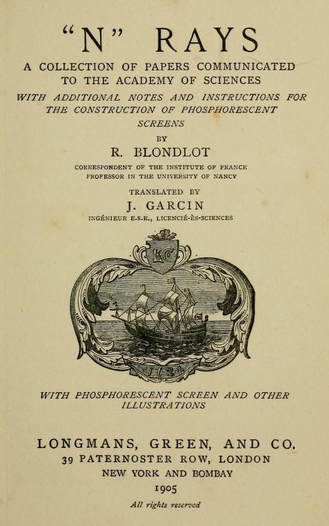 There is a joke that illustrates misguided science thinking. A man is in a public area screaming at the top of his lungs. When somebody comes over and enquires why he is screaming, the man replies, “To keep away rogue elephants”. When told that there are no elephants for miles around, the man replies that this is proof his screaming is working. If you think that is silly, consider the following recipe for obtaining mice by spontaneous generation (in other words, without the need for male and female mice): Place a soiled shirt into the opening of a vessel containing grains of wheat. Within 21 days the reaction of the leaven in the shirt with the fumes from the wheat will produce mice. No, I’m not kidding you! For many centuries some of the best minds in humanity believed that life could regularly arise spontaneously from nonlife or at least from unrelated organisms. Some people went as far as outlining procedures to achieve this, such as the one presented above to generate mice supplied by the chemist Jean Baptiste van Helmont. Presumably, this individual (who is no stranger to misguided scientific thinking) placed a shirt in a vessel with grains of wheat, and when he checked 21 days later he saw a mouse scurrying away. Therefore, he concluded that the mix of the wheat and the shirt in the vessel produced the mouse. What the above examples of misguided science have in common is the ignoring of alternative explanations. In the case of the joke, the alternative explanation obviously is that there are no rogue elephants nearby to begin with. In the other case, the alternative explanation is that the mouse came from elsewhere, as opposed to arising from the shirt with the wheat. The best scientific experiment is one carried out in such a manner that alternative explanations for the experimental results are minimized or ruled out altogether. The ideal scientific experiment should only have one possible explanation for the outcome. In order to achieve this, scientists use controls. A control is an element of the experimental design that allows for the control of variables that could otherwise affect the outcome of the experiment. In the case of the joke, the man could stop screaming to see if rogue elephants show up, or he could scream next to an actual elephant to see if screaming works. In the case of the real example, van Helmont could have placed a barrier around the shirt with the wheat to rule out that mice came from the outside. The use of controls in experiments is so commonplace nowadays, that it is really hard to imagine how anyone could even think of performing an experiment without them. However, the modern universal notion of controls as a way of controlling variables to rule out alternative explanations to experimental results did not begin to take shape until the second half of the 19th century, even though scholars claim that strategies to make observations or experiments yield valid results go back further in time to the Middle Ages or even antiquity. In science, the controls that are most often used are those involving outside variables that can affect the results of an experiment. However, the more important and more challenging variables to control are those that arise from within the experimenter.  Illustration of the Canals on Mars by Percival Lowell Illustration of the Canals on Mars by Percival Lowell If the procedure to make an observation or evaluate the results of an experiment depends on a subjective judgement made by the experimenter, as opposed to, for example, a reading made by a machine, then subtle (and not so subtle) psychological factors can influence the result depending on the biases of the experimenter. I have already mentioned the famous case of the scientist René Blondlot who in 1903 announced to the world he had discovered a new form of radiation (N-rays), but it turned out that such radiation existed only in his imagination. Another famous case was that of astronomer Percival Lowell who, at the turn of the 19th century, thought he saw canals on Mars which he considered to be evidence of an advanced civilization. He was a great popularizer of science and he wrote several books about Mars and its inhabitants based on his observations, but the whole thing turned out to be a delusion. To avoid this type of mistake, many experiments that rely on subjective assessments employ a protocol where the observer does not know which groups received which treatments. This is called a blind experimental design.
An additional challenge occurs when a scientists works with human subjects. Psychological factors can have a potent role in influencing the results of medical experiments. Depending on the disease, if patients are convinced that they are receiving an effective treatment, and that their condition will improve, said patients can display remarkable improvements in their health even if they have received no effective treatment at all. To rule out the effect of these psychological factors, scientist performing clinical trials include groups of patients treated with placebos. Placebos are fake pills designed to mimic the actual pill containing the active chemical substance or ineffective procedures designed to mimic the actual medical procedure in such way that the patient cannot tell the difference. To also rule out the influence of psychological factors arising from the doctors giving patients in one group a special treatment, the identity of these groups are hidden from the clinicians. Clinical trials which employ placebos and where both the patients and the clinicians don’t know the identity of the treatments, are called double-blind placebo-controlled trials, and they are the most effective and also the most complex forms of controls. Unfortunately, the use of controls is not always straightforward. I have already mentioned the case of the discovery of polywater which was heralded as a new form of water with intriguing properties that promised many interesting practical applications until someone implemented a control and demonstrated that it was the result of contamination. Sometimes scientists do not know all the variables affecting an experiment, or they may underestimate the effect of a variable that they have deemed irrelevant, or they may misjudge the extent to which their emotional involvement in conducting the experiment may compromise the results. Designing the adequate controls into experimental protocols requires not only discipline, discernment, and smarts, but sometimes also just luck. In fact, some scientists would argue that implementing effective controls is not a science but an art. The art of the control! The Elephant cartoon from PixaBay is free for commercial use. The Illustration of Mars and its canals by Percival Lowell is in the public domain.
2 Comments
There is an old science joke where a scientist trains a spider to jump when a bell is rung. The scientist then removes a leg from the spider under anesthesia and makes sure the spider heals. The scientist proceeds to ring the bell again. Even with one less leg, the spider manages to jump in response to the sound. The scientist repeats this procedure removing a leg each time and ringing the bell, and the spider manages to “jump” in response (at least as best as it can). This goes on until the spider is legless. After repeatedly ringing the bell and getting no response, the scientist concludes that the spider without legs becomes deaf! What is ironic about this silly joke is that scientists have recently discovered that indeed the spider's ability to detect sound is based on hairs present on its legs. So you see, the scientist in the joke arrived at the right conclusion (legless spiders become deaf) although for the wrong reasons! The above got me thinking about whether there are any examples of real scientists who got it right but for the wrong reasons. As it turns out there are a several examples, and one of the most famous of these is the French Chemist and microbiologist Louis Pasteur and the idea of spontaneous generation. In the 19th century, the notion of spontaneous generation came under attack. This ancient notion posited that life continuously arises from non-life. At the time, the fact that nutrient broths exposed to the air would develop microorganisms was considered evidence for spontaneous generation. However, although a consensus had begun developing that life could only arise from preexisting life, and that the microorganisms that swarmed in nutrient broths represented nothing but airborne contamination, many scientists still defended the idea of spontaneous generation.  Into this scene entered Pasteur, and he performed his famous experiments where he boiled sugared yeast-water in a flask that remained exposed to the environment through a very long neck (swan-necked flasks). Pasteur found that the nutrient mix inside the flasks remained uncontaminated, presumably because any airborne organisms stuck to the neck of the flasks, but as soon as he broke the neck of the flasks or tilted them, bacteria and mold stated growing. He repeated these experiments with sterile liquids that did not have to be boiled, like blood or urine obtained directly from the bladder, and attained the same result. To great acclaim by the scientific community he declared that he had demonstrated that only germs in the air can produce the growth observed in these nutrient mixes, therefore life can only arise from life. However, a few scientists challenged Pasteur. These scientists, using different nutrient mixes like hay infusions or potash solutions derived from urine, found that microorganisms arose in nutrient broths even after they had been boiled and isolated from the environment in a manner similar to Pasteur’s procedure. They claimed their results proved that, at least in these different nutrient infusions, life arose by spontaneous generation and challenged Pasteur to repeat their experiments publicly. What did Pasteur do? He ignored their results, or dismissed them claiming they were due to sloppy methodology, and refused to repeat their experiments. Pasteur prevailed thanks to his connections, his fame, and for being against spontaneous generation at the right time. As far as he and his supporters were concerned the matter had been settled. So who was right? Even though Pasteur acted very unscientifically in addressing his critics, he was indeed right, but for the wrong reasons. Spontaneous generation does not occur, but Pasteur was wrong to ignore or dismiss his critics’ results, because these results were true. It would be more than a decade after Pasteur performed his experiments before it was understood that there are bacteria that produce spores which can survive heating at very high temperatures. It is likely that Pasteur’s infusions of sugared yeast-water did not contain these bacteria, but that the infusions of hay and potash employed by his critics had these spore-forming bacteria. Therefore, even after boiling these infusions at high temperature, Pasteur’s critics found these nutrient mixes became contaminated when the spores became active after the temperature had returned to normal. The critics were wrong in claiming their results supported spontaneous generation, but at the time the complete truth was not known, and there was enough ignorance to go around.  Pasteur Pasteur Ironically, if Pasteur had behaved like a true scientists and repeated his critic’s experiments, he would have had to face conflicting evidence that could have led him to admit that spontaneous generation was possible in some cases. This could have muddied up the field and hindered progress, but by ignoring valid data, he avoided an incorrect interpretation, and arrived at the right conclusion. Such is the complexity of the interaction between reality and the human mind in the context of scientific discovery. Pasteur moved on to greater accomplishments (and more controversy, but that’s another story) where he was proven right many times. Today he is remembered for the process to prevent bacterial growth in substances like wine and milk (pasteurization), his many contributions to the prevention of disease which saved countless lives, and the founding of the Pasteur Institute which over the years has had a huge impact on health science worldwide with 10 of its scientists being awarded Nobel Prizes. Nevertheless, in the case of spontaneous generation, he was right but for the wrong reasons! My reference for Pasteur’s story is John Waller’s excellent book: Fabulous Science. Image of Pasteur’s experiment by Kgerow16 is used here under an Attribution-ShareAlike 4.0 International (CC BY-SA 4.0) license. The image of Pasteur by Paul Nadar is in the public domain. In the late 19th century a series of remarkable discoveries in physics were made including X-rays and radioactivity. A new world of physical phenomena was being uncovered by scientists, and hopes of new discoveries were high. It was thus in 1903 that the French physicist Prosper-René Blondlot announced that he had discovered a new form of radiation which he christened N-rays after the University of Nancy where he worked. The problem was that N-rays were difficult to detect and several scientists had problems reproducing Blondlot’s experiments. So the British Journal Nature sent the physicist Robert Wood to Blondlot’s lab to witness an N-ray demonstration.  The demonstration involved an N-ray producing machine that relied on a prism made of aluminum to generate the rays. The room was darkened, the machine was started, and the N-ray measurements were begun. But Wood, who had a reputation as a debunker, removed the prism from the machine - something that would have caused the N-rays to cease to be produced. However, Blondlot and his assistant kept making the N-ray readings as if nothing had happened. This and other evidence led Wood to conclude that this radiation did not exist, and that what Blonlot was detecting was only present in his imagination. The N-ray story is a classic example of experimenter bias. When a scientist is performing measurements that involve a subjective component, there is the danger that the scientist will see what he or she wants to see. The common solution to this problem is to make the scientist blind. Thankfully this does not involve gouging their eyes out, but rather coding the samples to be evaluated. In this way the experimenter is “blind” to the identity of the samples and thus the bias is eliminated. These blind protocols are routinely applied in science whenever there is a chance that knowing the identity of the samples will affect their reading. But the complexity of the human mind to warp the scientific enterprise goes beyond the laboratory. In clinical trials a very well-known phenomena is the placebo effect. In this effect the patient experiences an improvement in their condition after being administered an inert substance or exposed to a procedure that should not be effective at treating their ailment. To avoid experimenter bias and the placebo effect, clinicians implement what is called a double blind protocol where both the doctor and the patient do not know the identity of the treatment. Not controlling experimenter bias can lead to bad science. So, you see, the only good scientist is a blind scientist! The image from Archive.org is in the public domain. |
Details
Categories
All
Archives
June 2024
|
 RSS Feed
RSS Feed